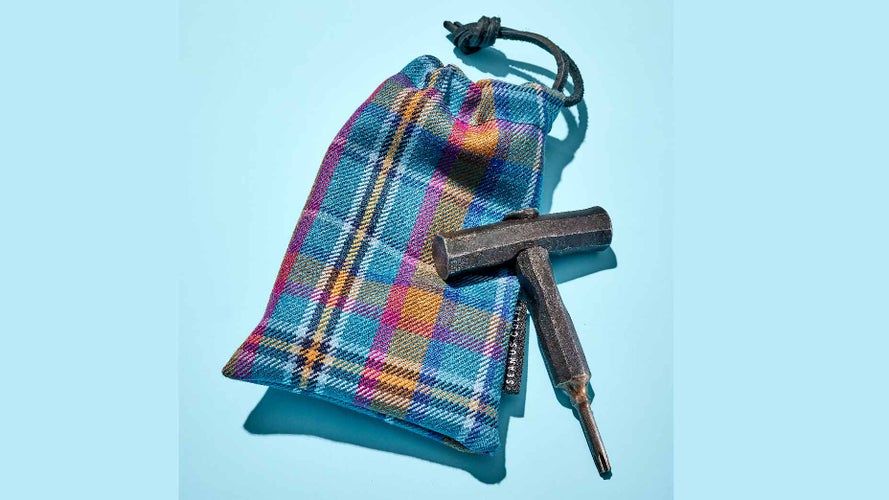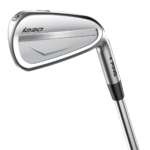
When it comes to pitch shots in golf, the question arises: should you take a steep or shallow approach? Well, it all depends on your skill level and the specific matchups you’re facing on the course. According to The Short Game Chef, weekend golfers tend to fare better with a shallower angle of attack. By focusing on a wider takeaway, centered body position, and a vertical shaft at impact, you can engage the bounce on your wedges and have a greater margin for error. However, if you consider yourself savvy in wedge play, a steeper approach can also work for you. With at least 10 degrees of down angle and a swing that goes out-to-in, you can achieve that crisp ball-first contact. The choice is yours!

The Importance of Angle on Pitch Shots
When it comes to pitch shots in golf, understanding the significance of steepness or shallowness is crucial. The angle of your club’s approach to the ball can greatly impact the outcome of your shot. In this article, we will explore the different angles and techniques for pitch shots, as well as the benefits of each approach. By experimenting with different angles and practicing consistently, you’ll be able to choose the best technique for your game.
Matchups and Skill Level
Before we dive into the techniques, it’s important to consider your skill level and how it relates to the angle of your pitch shots. Weekend golfers, who may not have as much experience or practice time as more seasoned players, tend to fare better with shallower angles. This means attacking the ball with a wider takeaway, keeping the body centered, and getting the shaft vertical at impact. Engaging the bounce on your wedges in this manner provides a greater margin for error on mishits.
On the other hand, savvier players who have a better feel for their wedges can benefit from a steeper angle. This involves using at least a 10-degree down angle, achieved by shifting the weight forward during the backswing and maintaining a narrower swing on both sides of the ball. With a steeper swing, players can achieve that crisp feel of ball-first contact, but it requires more precision and accuracy.
Shallow Angle Technique
For those opting for a shallower angle approach, there are specific techniques to employ. Start with a wide takeaway, which means taking the club back on a more horizontal plane rather than a steep vertical plane. This wider takeaway sets you up for a more shallow angle of attack.
Additionally, maintaining a centered body position throughout the swing is crucial. Avoid swaying or shifting too much weight to one side. Keep your weight balanced and centered, allowing for a more controlled and consistent strike.
Finally, focus on achieving a vertical shaft at impact. This means that the handle of the club should be pointing directly towards the target. This technique promotes a clean strike and helps engage the bounce on your wedges.
Steep Angle Technique
If you prefer a steeper angle approach, there are specific techniques to follow as well. The key is to create at least a 10-degree down angle during the swing. To achieve this, shift your weight forward during the backswing, putting more pressure on your front foot. This shift in weight helps create a steeper angle of attack.
In addition to weight transfer, it’s important to maintain a narrow swing on both sides of the ball. By keeping the swing compact and minimizing excess movement, you can ensure a consistent strike and more control over the shot shape.
The Out-to-In Swing
When employing a steeper angle technique, it can be helpful to visualize swinging out-to-in, as if you are intentionally hitting a cut shot. This swing path promotes a steeper angle of attack and can lead to that crisp feel of ball-first contact. However, it’s important to note that this technique requires precise execution to avoid slicing or pulling the ball.
Benefits of a Shallow Angle
Choosing a shallower angle of attack for your pitch shots offers several benefits. By engaging the bounce on your wedges, you can prevent the club from digging too far into the turf, resulting in cleaner strikes. Additionally, a shallower angle provides a greater margin for error on mishits. Even if you slightly miss the center of the clubface, the bounce of the club can still help salvage the shot.
Benefits of a Steep Angle
Opting for a steeper angle of attack can also have its advantages. A steeper angle allows for that crisp feel of ball-first contact, which can create a more powerful and controlled shot. Players who have the skill and precision to consistently execute a steeper angle technique can also have greater control over the shape of their shots, enabling them to work the ball left or right as needed.
Matching Technique to the Situation
When deciding on the angle of attack for your pitch shots, it’s important to assess the specific situation. Factors such as the lie of the ball, pin position, and turf conditions should all be considered.
For instance, if you have a tight lie with minimal grass under the ball, a shallower angle would be advantageous. This allows the bounce of the club to glide along the ground, preventing the club from digging into the tight lie.
On the other hand, if you are facing a fluffy lie or a deep bunker shot, a steeper angle may be more suitable. This will help you generate more spin and loft on the ball, allowing it to quickly stop on the green.
Additionally, take into account the pin position. If the pin is located towards the back of the green with minimal green to work with, a shallower angle can be effective in getting the ball to release more once it lands. However, if the pin is located towards the front of the green with plenty of green to work with, a steeper angle can help stop the ball quickly.
Practice and Experimentation
To truly understand and master the different angles and techniques for pitch shots, practice and experimentation are essential. Consistency is key, so practice your chosen technique regularly to develop muscle memory and a reliable swing.
However, it’s also important to experiment with different angles for varying situations. By testing different techniques during practice rounds or on the practice green, you can gain a better understanding of what works best for you and your game. Don’t be afraid to try new things and adjust your approach based on the results you see.
Conclusion
In conclusion, there is no one-size-fits-all answer when it comes to choosing the angle of attack for your pitch shots. The decision should be based on your skill level, the specific situation, and your personal preference. Experimentation and practice are necessary to find the best technique that suits your game.
By understanding the importance of angle on pitch shots and implementing the appropriate techniques, you can enhance your consistency and control. Whether you opt for a shallower or steeper angle, focus on developing a technique that allows you to consistently strike the ball cleanly and achieve your desired shot shape.
Source: https://golf.com/instruction/steep-or-shallow-pitch-short-game-chef/





